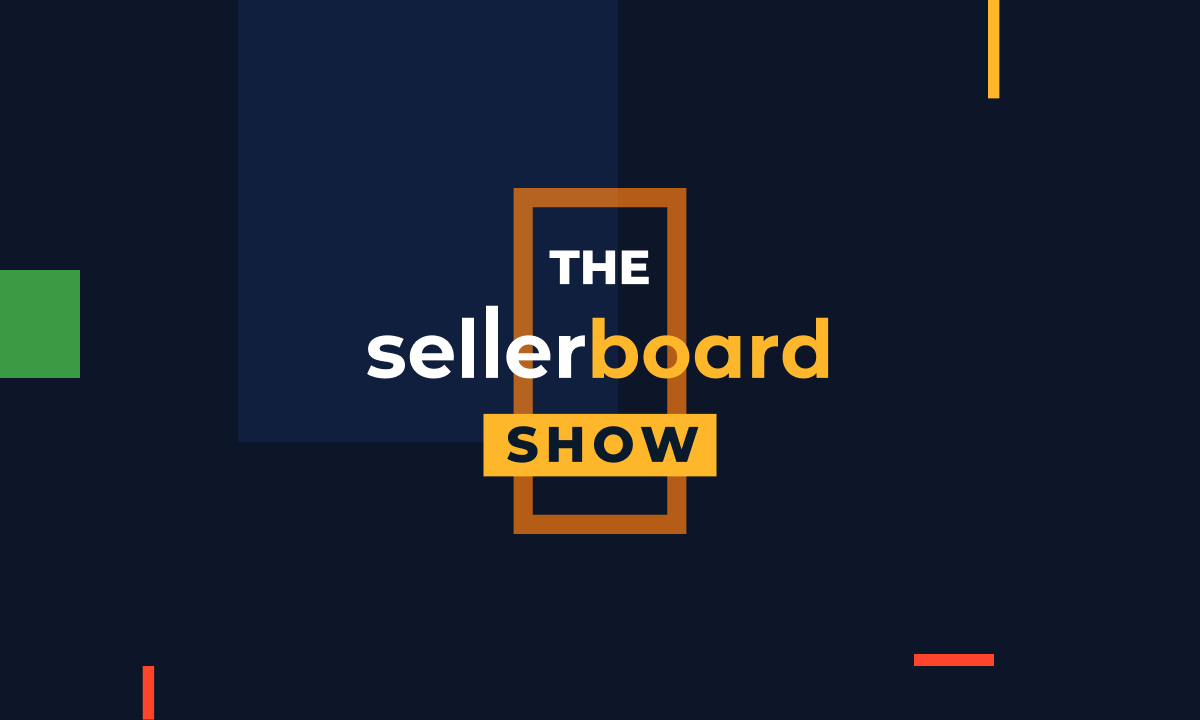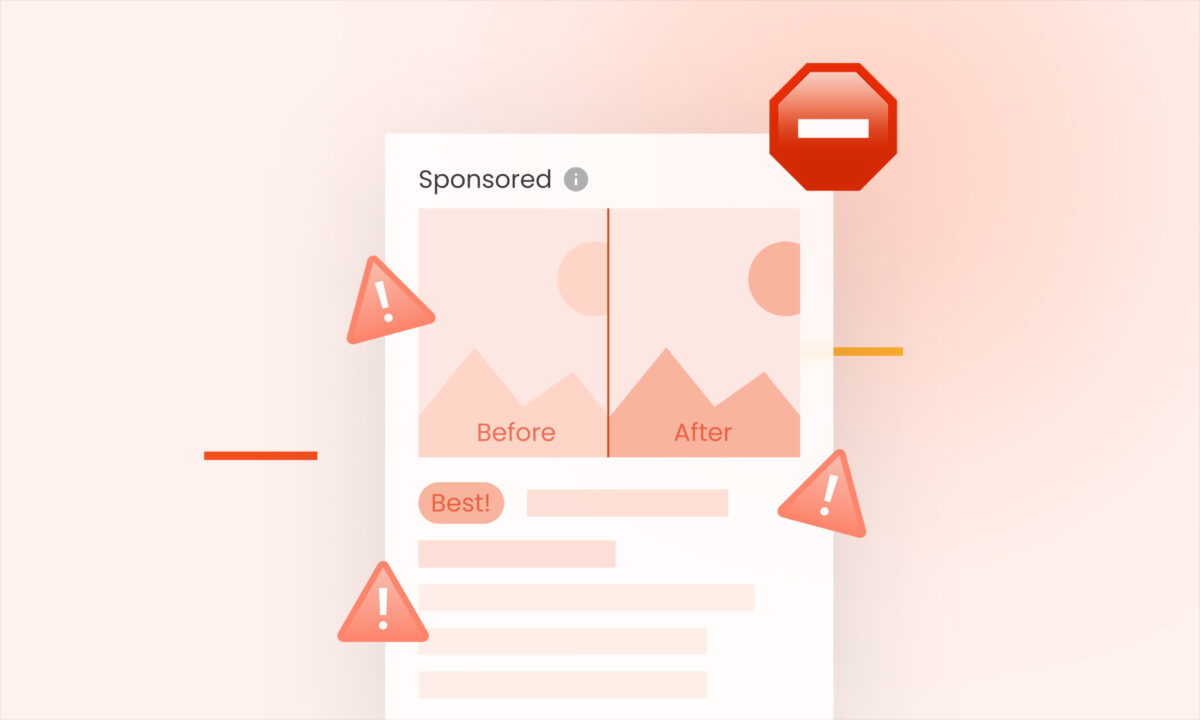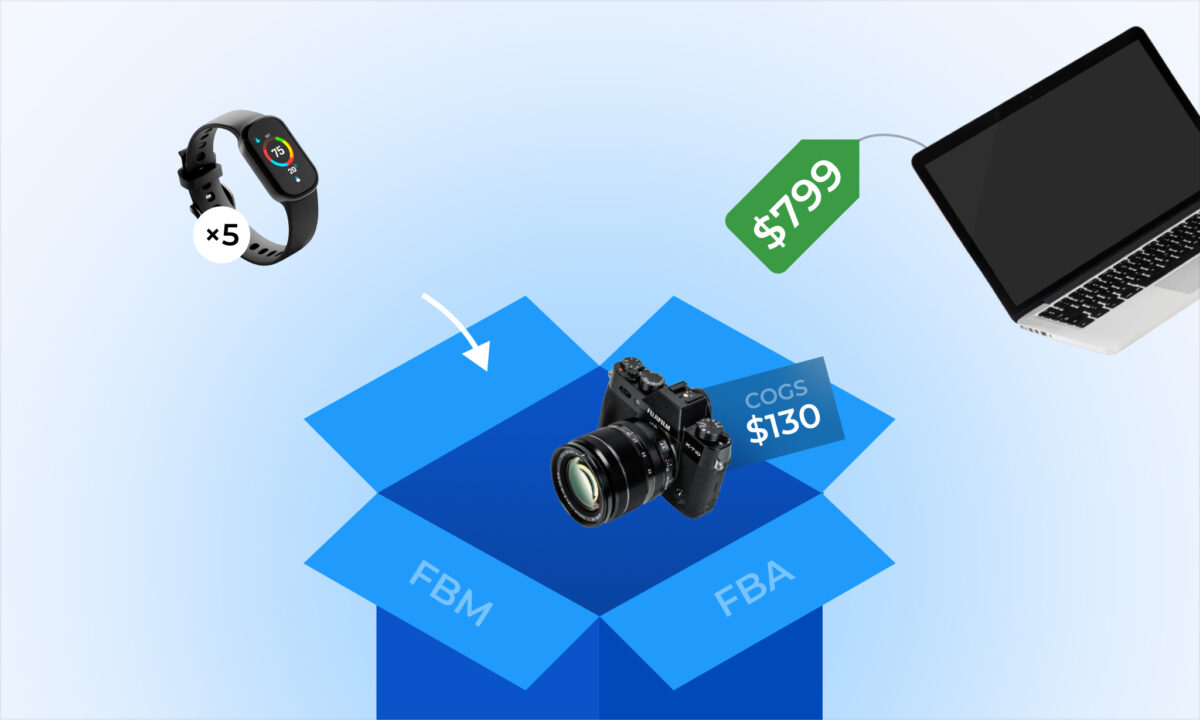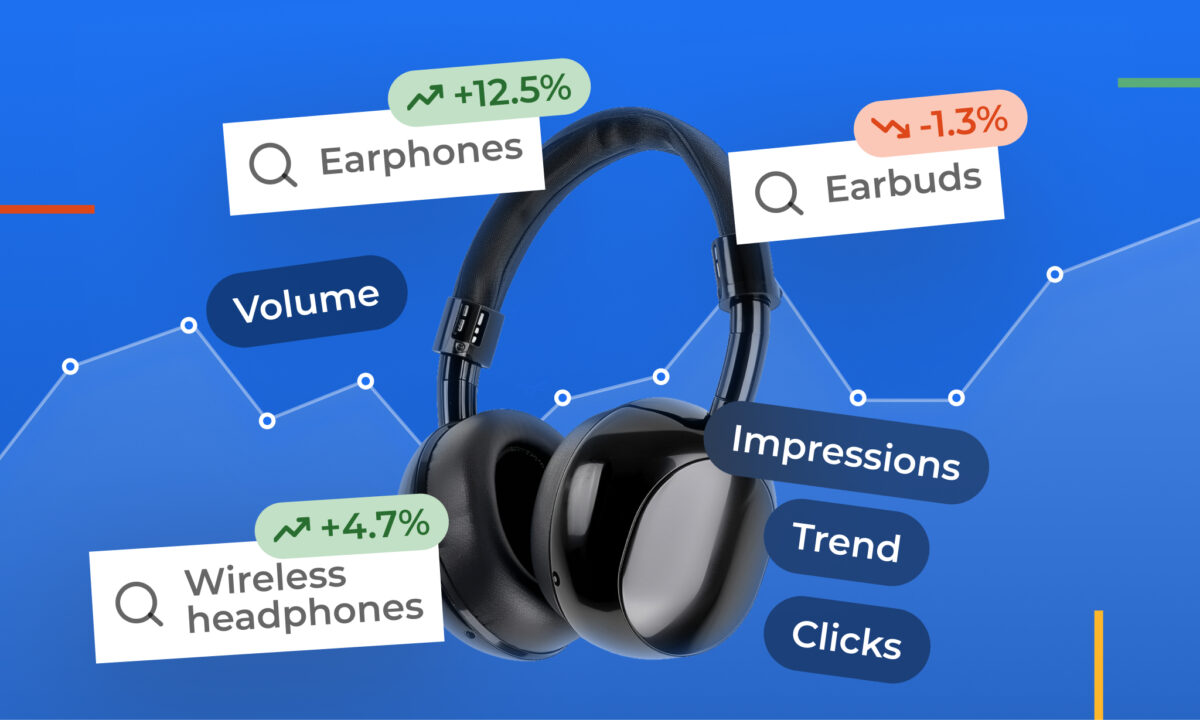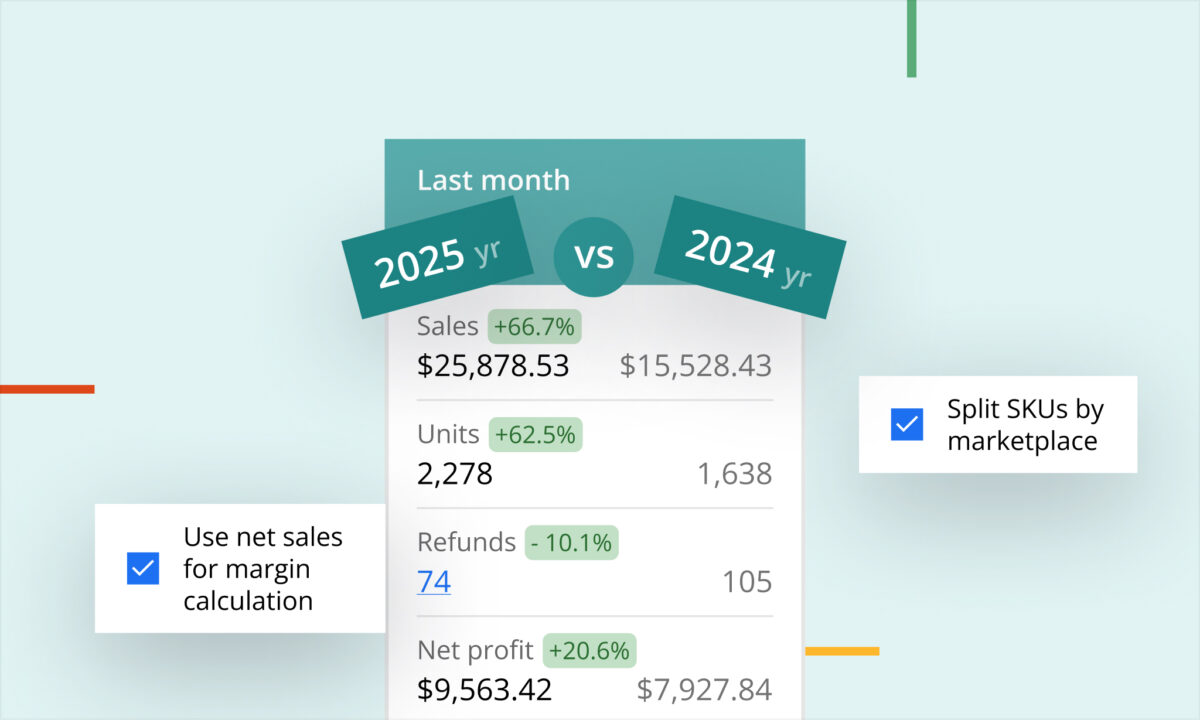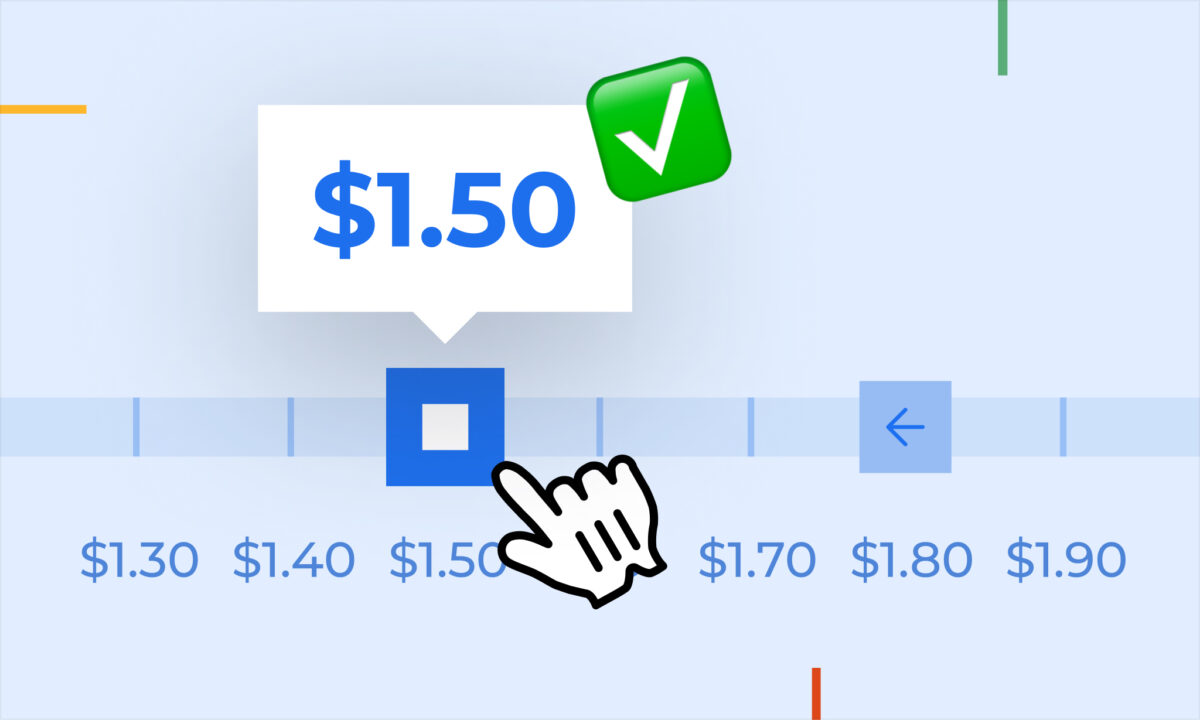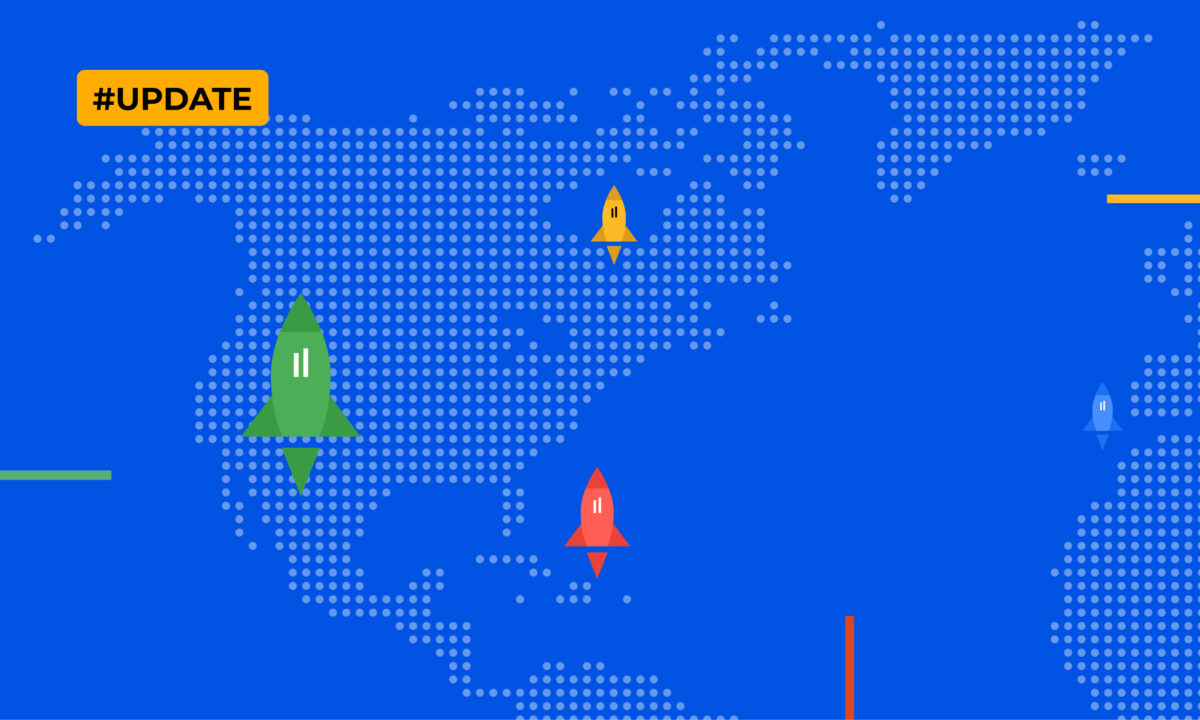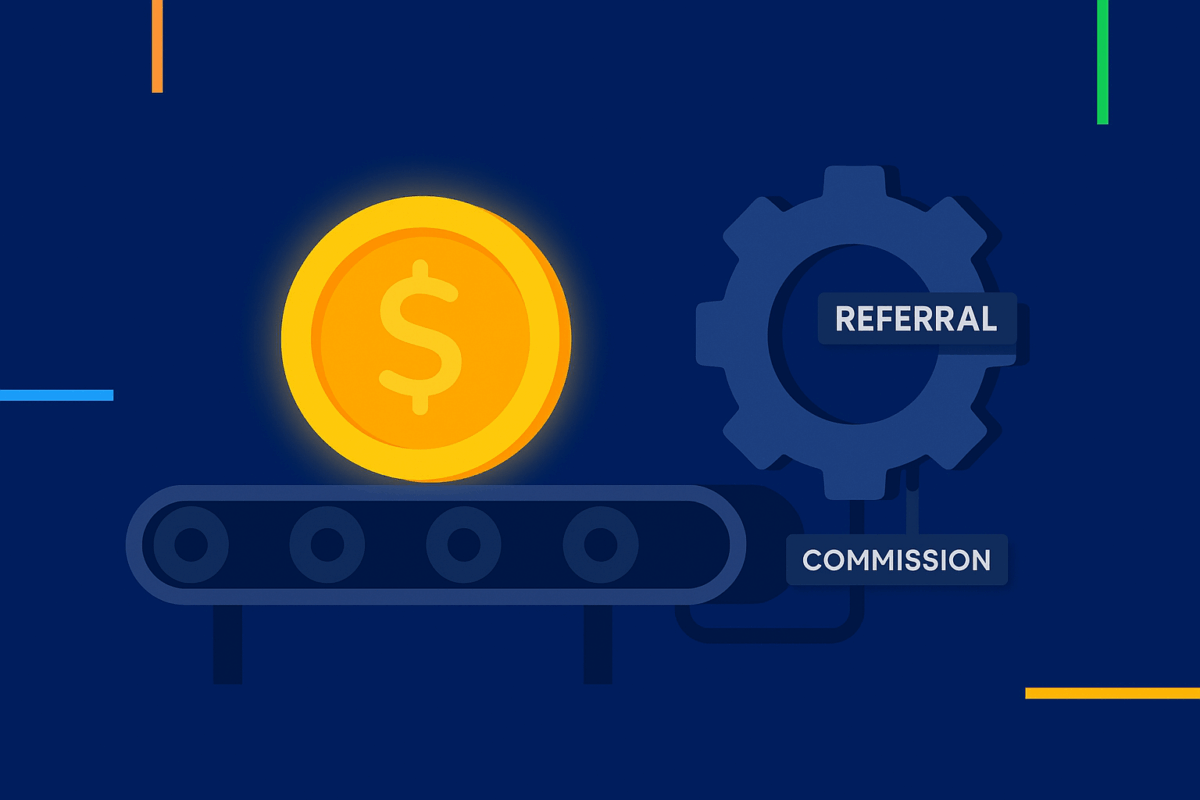Our guest on the 3rd of August, 2020, on the sellerboard show was Yael Cabilly from e-cabilly.com
We talked about:
- All you need to know about patents, design patents and trademarks as an Amazon FBA seller.
- How to stay legally safe when selling on Amazon and what to do in case you run into any sort of legal issues.
Watch the full video here: https://www.youtube.com/watch?v=7eisCfOgvsU
[00:00:07] Hello, everybody, and welcome to the next episode of this show. My name is VladiGordon and my today’s guest is Yael Cabilly. She has two firms. She runs a law firm called e-Cabilly, and they focus on sellers and help sellers get reinstated if they are blocked. And basically, they deal with all kinds of legal stuff. And she has a company called Fortunet, which focuses on helping soldiers to sell their businesses. And in this first part of the interview will focus on the legal stuff. We delve into three topics, mainly its patents, design, patents, and trademarks. And we talked about these things, what they mean and what you should do, a seller to stay out of trouble. For example, respect to the trademark, how you can use trademarks on your listings, and how you shouldn’t use them. And if you’re a wholesaler, for example, what you can do if you get banned for trademark infringement. And then we discuss patents and design patents, how you can research if you’re selling a product, for example, if you’re in a private label business, or you can research whether you’re infringing someone’s patent or no when you’re starting your product. And then something really interesting, design patents.
[00:01:23] So I didn’t really realize that the designs are also patented and they’re also copyright copyrights for, for example, for four pictures that you use or even parts of the picture. So this is going to be really valuable. Make sure you follow Yael’s recommendations and double-check, because it’s better to be safe than sorry. And if you do run into trouble then and has some advice for you, what to do. Before we start, take a look at ourselves. The link is the description sellerboard is a profit analytics platform for Amazon sellers with a ton of other stuff on top, for example, at PPC optimization model for getting back money for lost and damaged goods from Amazon. If Amazon lost or damaged some of your inventory, sometimes they won’t be back automatically. We can find such cases and help you get the money back. Then we have an inventory management model and some other stuff coming up. So check out the link in the description board column. There’s a one-month free trial and it’s only nineteen dollars a month after that. Now, let’s start the show.
[00:02:39] Hello, how are you? Good, how are you doing? Great things come off. Thank you for your time. Looks like you’re in the office, though, right?
[00:02:50] I’m in the office. Yes, we’re back to the office. So it’s it’s better now. It’s better now.
[00:02:57] Nice. So why don’t you introduce yourself to our listeners?
[00:03:03] Sure. So I’m originally a trademark lawyer.
[00:03:09] I’ve been working with Amazon sellers since twenty fifteen, and so I have a law firm that deals with that with especially with intellectual property issues on Amazon suspensions related to patterns, trademarks, copyrights. And we also deal with the registration of trademarks and patents all over the world. That’s about my law firm where 11 were licensed in New York and most of our clients are in the US, Europe, Russia, Australia. And besides that, I have I’m co-founder of a separate company name the fortunate word, help me two large sellers selling their business. So we actually help with the exit. We help finding a buyer. But from the beginning and now with the entire process.
[00:04:21] That sounds good. Let’s talk about both parts, actually, because I think they’re both relevant for all listeners. So with your law firm, like you mentioned, suspensions and trademarks and patents and so on. So do you like are you more focused on getting sellers unblocked or like on the Amazon site or rather on the legal side, like they get in trouble with some trademark issues and so on?
[00:04:55] So, I mean, I guess in percentage, most of the work is with Amazon, so, for example, if you’re selling a product and the brand filed a complaint against you saying that you sold infringing products or fake or counterfeit products, we would prepare and appeal to Amazon and the seller would use our kind of opinion or we explain to Amazon why it’s not infringing if you’re selling the original product according to the first sale doctrine that you’re actually allowed to sell them, that’s not an infringement. So in that sense, we have with suspensions at the end, you’re reinstated. But it’s illegal. It’s a legal field, because if the seller sells Amazon, I’m not infringing. It’s a little different than when they get an opinion from a lawyer saying they’re not infringing.
[00:05:51] So we remind Amazon of the laws and that and the first sale doctrine then and we get them reinstated. And the same goes for patents and design patterns. There are many false complaints.
[00:06:07] And in that field and in trying to help, we also I mean, we’re also helping on losses, many, not many, but some sellers receive, especially on eBay. That happens a lot. But also on Amazon, they receive losses for trademark infringement, for patent infringement. So when that happens, we have we usually negotiate and we close it without having to go through the entire litigation.
[00:06:38] Ok, OK, so tell me, like you mentioned, trademarks and we talk about both of them.
[00:06:48] So trademark is pretty obvious, right? If it means. I’m using, like, somebody’s trademark my description.
[00:06:57] Right, so I train the trademark infringement cases that we usually see is so one example is the example that you gave Velcro is an example that we see a lot of people using the name Velcro and they thought it’s a generic word and it’s someone else’s brand, or they use the word iPhone, but not as they should be, just use iPhone everywhere where they could be compatible with iPhones, the iPhone cases and things.
[00:07:31] That’s interesting. So you can you shouldn’t try the iPhone case.
[00:07:37] And that’s a problem.
[00:07:39] Yeah, no problem that’s infringing because when you write iPhone case, you have a risk of being suspended because that that can that can confuse the buyers to think that it’s actually an iPhone case where it’s not it’s the case for iPhone or for a case compatible with iPhone four. It’s not one with the know that I have here where you have the real one. So that’s not allowed. And that’s a mistake many people do in terms of trademarks. We also see a lot of suspension, as I said earlier, where people sell the real brand and they’re accused for of selling counterfeit products and they’re not. So that’s a typical one that we see every day. A lot of the time brands file complaints. They don’t care if it’s infringing or not infringing for them.
[00:08:35] It’s not authorized. So it’s infringing.
[00:08:37] But but that’s not what the law says. You’re allowed to resell a brand even if you’re not authorized. If that is not a trademark infringement and that’s not counterfeit. It just means you’re not authorized. And maybe there’s some kind of breach of agreements if you signed an agreement with a distributor or something. But that’s not trademark infringement. So that’s one of the most common we see. So that’s our trademark.
[00:09:05] Ok, I have actually two questions. One about the private label. First, you mentioned this example from Case.
[00:09:11] This is very valuable thing because I would have an iPhone case if I would sell them. Like what other types of problems are there? So you should be careful using some generic words, like you said, Velcro. I was sure that it’s a generic word as well. So you should be careful about using trademarks, right. If you do not trademark on your listing, is there anything that can still go wrong with the trademark?
[00:09:42] Yes. So one of the main problems, I’ll go a little deeper on trademarks, because that’s something that we see a lot. And I tried to say everywhere I can into every seller I speak with.
[00:09:54] When you choose your brands, when you’re a private label and you choose a brand, most of the sellers do a quick search on the USB till they see that that that the exact same name doesn’t exist. And then they proceed. They go to the manufacturer. They say, OK, that’s my brand and they go on. What happens is that a few months later, they come to us and they say, Yeah, I want to register the trademark and I do a search. And I found out that I cannot register the trademark because there’s similar trademark, not exactly the same. For example, if I have my ball here, says Kabakov.
[00:10:33] Ok, see. OK, so let’s say that you are Kopko. You did a search. There is no kopko, right? But there is a cap OK with an A or something like that that would be considered if that’s to the same class in the same classification and they’re also selling bottles that would be infringing. So you will not be able to get a trademark.
[00:10:57] So what happens is that they come to us, they want we do this search, we always do a search.
[00:11:03] And then I tell them, listen, I need to you need to change the brand. You want to get a trademark. So they become very upset because today, according to Amazon’s rules, you can’t change you cannot change the brand on your listing. Once you start it, you need to open a new one. That’s the rule of many, many people don’t do it. They just manage to change it and keep the reviews. But the fact is that the rules say you cannot change the brand. So I really feel sorry for people who started. They gained review. They worked hard with launching the product and everything. And then they come to us and the trademark cannot be registered. And having a business without a trademark on Amazon is a nightmare. You can have highjackers jumping on your listing. You will not have the EBC and the enhanced content. And when you want to sell the the the your your account later, buyers won’t buy it because you don’t have a trademark. So my advice is when you choose your trademark at the beginning, do a search. Most most of the lawyers will do a search and it’s included in the trademark that you’ll do later. Not all of the lawyers, but some of them. But in any case, just invest in the search because it’s I mean, that will save you thousands of dollars later if you have a problem. So do the search and then go to the manufacturer and then come back after two or three months to register to.
[00:12:36] Great, everything will be OK, so I have a question, when I was selling myself a couple of years ago, I kind of thought myself probably my trademark shouldn’t be similar to someone else’s. Right. And I know there is like a visual similarity in that, a phonetic similarity. So you can not write the same word with different letters like double O instead of you or something like this. But the thing is, I believe kind of every trademark is already registered. So it’s very hard to come up with the name which doesn’t which is not similar in any way to any other registered trademark.
[00:13:18] So it’s like I’ll tell you what, it’s not in every field.
[00:13:23] Ok, so going back to the example of Kopko, if there’s Kopko selling cars, I don’t care. That’s not a problem.
[00:13:31] If there’s if he’s selling other products in the same category, that could be a problem. And inventing I mean, the the truth is that at the end, ninety-five percent of our clients get a trademark market. Eventually, we just don’t take the cases where we know what they want. But you can find a name that is not registered in this specific field. I mean, it can be the test is is it confusingly similar? OK, so if I register a cop car, of course, it’s very similar. It’s just one letter and it’s the same field. So that’s confusing. But if you’re going for something completely different or something in a different field, there’s no confusion. The consumer will not be confused to think that it’s the same. So at the end, most of the sellers managed to get a name that is not a finding. A domain name is more difficult these days. So what kind of trader?
[00:14:38] And what I’m saying, finding a domain name is more difficult than finding a trademark. But today and nobody cares about the extension of the domain name, you can do that or whatever, but that’s not really important.
[00:14:54] Oh, cool.
[00:15:01] All right, let’s talk about the next thing you mentioned, patents and design patents, so patent as far as understand its patents or maybe you explain what like what what what is a patent actually?
[00:15:14] What does it protect? Right.
[00:15:19] So there are two types of patterns. One is a design pattern that covers the ornamental features they call the actual shape of the product. So if you have I’ll take an example. I’m taking all the props from my on my desk.
[00:15:39] If you have that product that everybody knows. Right. About three years ago, people were selling that.
[00:15:45] So the shape of that product can be registered as a design patterns and anybody else using the same shape. I’m not talking about those weird colors that this product has. I’m talking about the actual shape. So if you’re going to copy my product and I registered as a design pattern, then you’re going to call it Vladi.
[00:16:08] I can remove your product within a day or even less to three hours just by showing my register design patterns. OK, so a design pattern is a great tool for Amazon sellers. The only problem with the design patterns is that if you’re smart and you’re going to change it, then instead of doing it like this, it’s going to be full here and you’re going to do five, six, seven changes, then my design doesn’t stop you. So that’s about design patterns. And many sellers get suspended for design patterns. We also see a lot of false complaints on that car in that area. People complain about design patterns that look different than that product.
[00:16:54] So actually, what is so different, like how different should it be?
[00:16:58] I mean, like you can make maybe a square thing instead of your own thing or like, what’s the measure of the difference?
[00:17:06] So the court talks about substantially similar. So if it’s substantially similar to that product now, what is substantially similar? That’s kind of subjective. Right. But I can tell you that on Amazon, for example, if there are four or five, six changes and the overall looks different, then not only you’re not infringing, you can even register your own design.
[00:17:30] So it’s actually funny. Many of our clients were suspended for design patterns and then they decided to change their product because they want to keep selling if they just change the design. And then they became design patterns owners and they’re going after other people. So if you’re on that side and then there on that side, that’s for design patterns.
[00:17:53] Actually, one more question.
[00:17:55] If you have something really generic, like a wallet, you’re supposed to have a wallet.
[00:17:59] It’s just like a square thing.
[00:18:02] If somebody so a square will be difficult to register as a design pattern, OK, but. From my experience, what you call generic isn’t necessarily generic, that’s generic is the word that is widely used among my clients. When they get the suspensions, they’re like, there’s no way there’s a path to just look for it because it’s a generic product. And I look at it and that’s not a generic product. I mean, there are some designs, even this bottle it has.
[00:18:37] I’m not selling that, by the way. It’s just something I do. It has some you can see here the design on that side and it can open here. So it is a particular design that you can potentially register. So what looks generic is always generic. If there is an. OK, thanks.
[00:19:02] All right. So if you make a square product, you’re on the safe side.
[00:19:07] Probably.
[00:19:10] All right, so tell me, like, how do you when you’re building a product, how do you even know that there’s a danger to you run into a problem?
[00:19:22] Because I’m so so first of all, I mean, to really do a search, you need a professional. Most of the sellers, usually the mid to large sellers, they hire a patent attorney to do a search.
[00:19:39] But if you’re a small seller and you don’t have the money to do the search, I always suggest to do at least do your own research and to do your own research.
[00:19:50] I would start with some kind of research on your competitors.
[00:19:55] So if, for example, you’re going to sell a product that I don’t know issue that Nike has designed and you want to sell it under Vardy’s trademark, you want to copy the design and just like private labels. So when I suggest is to go on Google patents, there’s actually a Google for patterns. It’s called Google patents and search for all the patents under Nike’s name. And then and then you can research and find that particular product that you want to sell. OK, so if I go back to that example, I would search for kopko design patterns. I would go on Google Earth and search for Kopko and then look for all the patterns they have. And if I find it, then I can I can decide if I’m I will be infringing or not if I can not finding on it. Maybe, maybe I didn’t use the right name of the company, but maybe they don’t have a patent. So that’s a rough search. And you’ll be surprised how people, once they’re suspended, they become the best searchers in the world.
[00:21:06] I mean, they even before they came to me, I search and I follow the pattern. I can’t believe I haven’t found it before. So you can do if you invest an hour on the product, you may get to to to the relevant patents. The only problem is that sometimes you’re not sure who the original company who designed it. So in that case, what I do is we go on even on Amazon, we go and you choose the first the largest five, and then you search for all leaders, all five leaders where you search on just Google and try to understand who was the first one.
[00:21:50] Very often there’s a Kickstarter or something at the beginning. So just research, probably 60 percent of the cases you’ll get the relevant if there is one. Sometimes the reasons why sometimes the person is on something of just started selling or sometimes it’s expired. But just through the search also, you can very often the owner of the patent actually writes on his website that it’s a registered patent or on the listing. So in that case, at least you have you know, you need to look for the patent when it’s pending. The only problem is that on the first eighteen months, very often the patent isn’t isn’t public. So sometimes you search and you cannot find it because it was just filed recently and it’s still pending. So it’s not public records. So that’s actually a problem. Many, many people ask me about that. You know, how do I find it if it was found a few months ago, that that’s a problem. You cannot you can only guess what they have. And you also know that they probably won’t get it tomorrow morning. But sometimes it’s not worth it to get into those products that have passed since then.
[00:23:17] I have two more questions on the business. So first of all.
[00:23:22] Like, is it applicable to fashion as well, because, you know, I know that fashion companies copy each other all the time or I know the second one is actually is it country specific or not?
[00:23:34] It’s country specific, so if you found it, patterns in the US doesn’t mean that there’s a path into Canada. Actually, very often when the country is infringing in the US, he will go and sell the products in Canada or something like that, just stop in the US and then go to other countries in Europe. So that’s about what else? What was the second question?
[00:24:00] Sorry, the fashion industry like you were talking about.
[00:24:05] Yeah, so, of course, the large companies, they register everything for everything, so don’t even bother searching for a case just because it’s there, you know, it’s just don’t copy Nike. Small companies don’t necessarily register everything because the fashion is changing, just like you said. And the models, by the time you have the design patterns, it’s already not relevant that the shirt isn’t relevant anymore. So so very often that’s not how they’re going to protect it. Then they’re going to protect it through copyrights. That’s something we haven’t discussed is the next one.
[00:24:50] But copyright protects graphic design. OK, so if I, if I have, for example, bad design here, so if I have a particular design that’s protected through copyright, so there’s no need to register that I’m protected from the minute I design.
[00:25:12] Ok, tell me more about that there was such a thing, I thought copyright is like when you write a text or something.
[00:25:19] So Copyright’s Protective Gear thinks it protects sex, just like you said, when you’re a rider, it protects images on Amazon.
[00:25:28] Ok, so if you’re you know, if you hired someone and you have your photo and somebody is copying your photo, you can file a complaint against that person without having any registration. If you want, I can send you a link that explains exactly how to file. It takes a second. Then Amazon removes that the seller. And the third part is graphic design.
[00:25:51] So if I let’s take for example, I’m kind to look around you with one example. I can give you one if you designed for example, let’s take a look here now.
[00:26:06] Now you got me and you know, I’m eating chocolate. My so so let’s take that example here so you can see the graphic designs that they made here.
[00:26:18] They do not have to register that design.
[00:26:21] Must be they eat that monster graphic designer designed that their protect, their copyrights are protected, which means that if you’re going to do chocolates or whatever, but usually chocolates with the same design, they can remove you within a second.
[00:26:42] And that’s a big problem for Amazon sellers. They like they usually take readymade designs from their supplier, for example, in the paper plate for paper plates, you’re going to see a lot of designs they would use, the one that they thought they saw that was already prepared by the supplier and then they get suspended for it. So the bottom line with graphic designs, it’s the same as the design department, but even easier to not use any graphic design or any photo of someone else. But you can easily take someone from five or, you know, a good designer and design your own and then you become a copyright owner. You didn’t pay anything for filing for copyright. It doesn’t cost any money. You become a copyright owner, by the way. We’re all copyright owner. You Vody are you’re a copyright owner because you took some photos on your iPhone, then you become the copyright owner. So so that’s a very cool thing on Amazon. So just remember two things about copyright. Do not copy any design, any graphic design from someone or take a ready one from your supplier, even if your supplier tells you he designed it. And then and then remember that you can enforce your copyright. So if someone takes your photo with graphic designs or even your text on your listing, you can easily remove it.
[00:28:15] And I can tell you how all I can just send you the link.
[00:28:18] Sure. So if you send us things, we will put it in the description. Sure do. Very cool. OK, well, I didn’t know that about designs. It’s kind of intuitive. You shouldn’t use someone else’s pictures, but that it’s so easy and especially the examples that you showed those old the like. OK, I didn’t know it was even protected.
[00:28:42] There’s no way then they think they need the registration. So. So, yeah, that’s something that needs to be remembered.
[00:28:50] So they’ll tell us when should our listeners contact you?
[00:28:55] Is it like when they run into some troubles or you mentioned launching a product. But yes, you said for most of the solar system early didn’t of the spend a ton of money on a lawyer before they actually know if it works.
[00:29:14] So once this time, I guess I guess, you know, several times if you do product research and you want to make sure there’s the math and we can help with that, if you’re usually if you’re on advanced or larger seller, they would do a patent search.
[00:29:32] But if not, then you can do it yourself with trademarks. You should definitely use a lawyer, either office or someone else to conduct a trademark search. It’s really not expensive and it’s worth the trouble later and then later, after a few months when you have your product online, then filing for the trademark. And if you have problems, of course, I hope you won’t have but if you have suspensions or things like that we can also help you getting reinstated and you know in most cases we can resolve the problem.
[00:30:08] Thanks so much look that was very valuable and I learned a lot. If you guys have any questions then post them in the comments and we will be able to ask Yael to take a look and respond. Thanks for watching, I hope you liked this episode so please leave your comments below and like this video and subscribe to our channel and we’ll see you in one week with the second part of this interview with Yael and we’re gonna talk about selling amazon businesses. Thank you! Bye.
